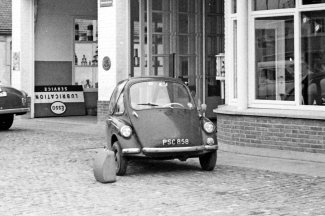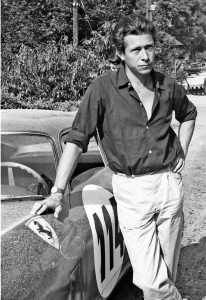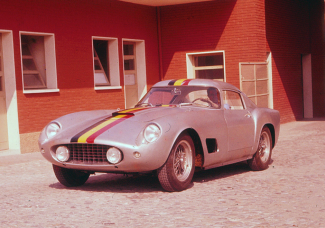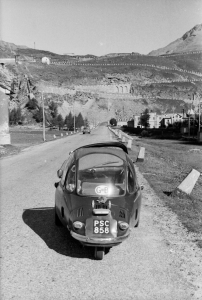One of the problems about the pace of change in society in the past fifty years, both economically and culturally, is that a young person of 24 today will not be able to understand the story I am about to tell.
These days we take the car for granted, it is there, just another tool in our busy lives but back in 1958 things were a lot different. And here I must be personal.
In December 1954 I had just finished two years of compulsory National Service in the Royal Air Force. I was 20 and needed to find a job. Luckily I had worked for a year before National Service in a newspaper as a trainee journalist and, even at the age of 17, had been appointed motoring correspondent. I did not have a car but as it was a local paper there were buses and trains to get about in.
Now, after two years in National Service, I became sports editor of a weekly motoring magazine in Scotland. However Scotland is a bigger place than Edinburgh and so I travelled to events every weekend either by bus, train or by getting lifts from competitors.
In 1957 thanks to a friend with a new MGA Coupe I was able to make my first visit to Modena in Italy and visit Ferrari, Maserati, Stanguellini and OSCA but I wanted to go back for more the following year, in September 1958.

I was stuck, until a rallying friend, who was a test pilot, jokingly said he had a Heinkel Bubble Car to spare so why didn’t I borrow that. No problem, I thought, and so I embarked on a drive from Edinburgh in Scotland to Modena in Italy including going over the Alps in a 175cc single cylinder engined three wheel Bubble car!
In those days there were no motorways and where a dual carriageway was something of a welcome thrill but I made the 500 miles to Southend on the English south cost in 20 hours of driving including through the night.
However, parking outside my hotel in Southend there was a bang and the clutch thrust broke. I had time to phone the Heinkel distributors in London and get the parts sent by train that afternoon but there was no Heinkel dealer in Southend. Only a BMW dealer that sold BMW Isettas, another German bubble car, and the chief mechanic said he would have a go and stayed on after working hours to help. As he did not have the correct tools the clutch plate shot off sending a handful of springs bounding over the garage floor. We managed to put things together but when we tried the car out we found we now had just one forward gear and three reverse gears! Eventually, we got it working and the mechanic and his wife gave me a bed for the night. But I had lost a day.
At that time there was an air ferry service using Bristol Freighters across the channel and I was booked to fly over from Southend to Calais, they squeezed the Heinkel on board and we took off. Halfway across the channel, the pilot announced that Calais was fogbound and we were now going to fly north to Ostend in Belgium which added another 107 kilometres to my trip. It was now Saturday morning and I was due to be at the Swiss village of Ollon, nearly 900 kms away, by Sunday morning because one of the rounds in the European Hill Climb Championship was taking place there and I had to make it.
By driving non-stop overnight I arrived at the paddock having averaged around 40 kph. I parked the car and unwound myself only to be met by an old friend, Belgian driver Olivier Gendebien, who could not believe his eyes. “ Have you driven that from Scotland ?” When I said I had he told me to come and have a coffee.

As microcar fans will know the Heinkel had one bench seat and a front hinged door connected to the steering column which was joined so that you then stepped out of the front. My suitcase and typewriter – yes we carted typewriters about back then – rested on the back shelf below which was the engine so it was a tight squeeze.
I left Ollon and continued over St Bernard pass where the Heinkel struggled and I remember at least three hours at times at 10 mph with the engine straining as I went up the pass followed by a mad downhill dash.
However, I made it to Modena safely but there was an amusing incident when I drove out to Maranello to visit Ferrari. I rolled up to the sliding gates outside the factory and the gateman came running over refusing me entry. Then he saw me and thankfully recognised me from the previous year and let me in.
I had planned to drive from Modena to Monza and back for the 1958 Italian Grand Prix but thought it would be daft and so took the train to Milan then another to Monza, covered the race and got back to Modena at Midnight.
I must say the Italians had a laugh or two as this ridiculous little car nipping in and out of the traffic but it got me around. When I started out on the long drive back to Edinburgh I planned to stop at the Reims circuit as the cars running in the Tour de France Automobile were having a race there and again I bumped into Olivier Gendebien this time in his brand new Ferrari 250GT with which he won the event. Ironically I had been at Modena Autodrome five days before and seen the Ferrari test driver, test the car before delivering it to Paris for the start of the Tour.

So what is the point of this story?
It is this. People today, and even back then, would laugh at these Micro cars but my marathon experience – total mileage was close on 3000 miles in just over two weeks – underlined two things to me. The Heinkel was as tough as old boots and would run flat out at 50 miles an hour for hour after hour. Ok, I will be honest, over the entire trip I had to change plugs nine times, as I kept burning them out, but apart from that it was reasonably comfortable compared to the small normal saloon cars of the day and was certainly economical with petrol.
The other thing I learned, as I was to test almost every microcar introduced at that time, was that the BMW, Heinkel and Messerschmitt were very well built, tough and reliable and not quite as daft as they appeared. This was particularly so compared to the British efforts of that time which were mainly three-wheelers with plastic bodies.
To this day I could never understand why cars like the Bond or the Reliant could not only be so shoddily built but had to be built with a single wheel at the front and twin wheels at the rear. Cornering at any speed led to violent lean one way or the other and all the pressure of steering on one wheel. Having the two wheels at the front as with the Heinkel was much more stable and, anyway, with a single wheel at the back, you could let it slide about on loose surfaces and still steer out of any trouble.

I never regretted that ultimate road test of a Heinkel because it taught me never to make a judgement on any vehicle unless you have driven it in as many different conditions as possible, and secondly, don’t be a car snob and look down on those sixty-year old cars that were built to provide cheap and reliable transport at a time when regular new cars were in short supply and petrol was scarce.
Nearly sixty years later I look back on that marathon Heinkel trip not only with the warm glow of nostalgia but the realisation that I was absolutely mad !
